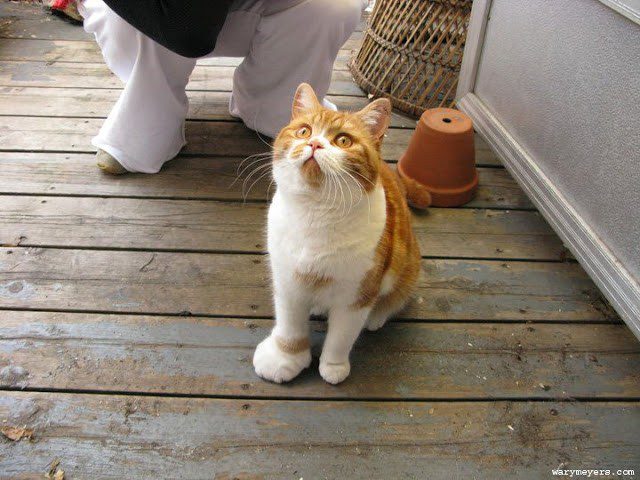
What to do if a cat is bitten by a bee, wasp or bumblebee?
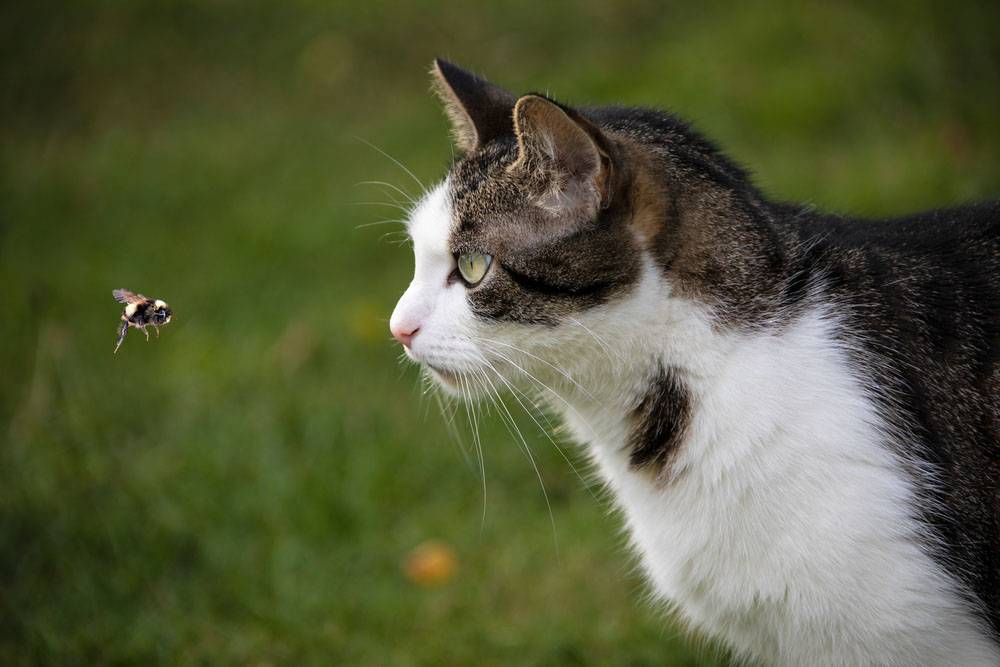
Contents
Is a bite dangerous for a cat?
Cats are agile hunters, but sometimes they themselves become victims of their intended prey. A pet can meet with a stinging insect not only in nature, but also on a loggia or balcony. Insects fly into the house through the windows, they are brought on a bouquet of flowers, with purchased berries or fruits.
Speaking of stinging insects, we usually mean hymenoptera: bees, wasps, bumblebees and hornets (although ants also belong to them), which, when biting, do not use their jaws, but a sting located on the back of the abdomen.
How dangerous is it if a cat is bitten by a bumblebee or other similar insect? The bite will cause severe pain and a local reaction – redness and swelling.
This is due to the fact that stinging insects release poison when bitten.
It contains a variety of substances that can lead to inflammation, both directly and as a result of an allergic reaction of the body. And this is the main danger of a bite – it can lead to systemic reactions, including anaphylaxis – an acute systemic allergy with a high risk of death.
It does not matter which insect stung the cat, because the symptoms and treatment are the same for all cases and differ only in the severity of the reaction to the bite. Multiple stings and stings from large insects (such as hornets) can be more toxic.
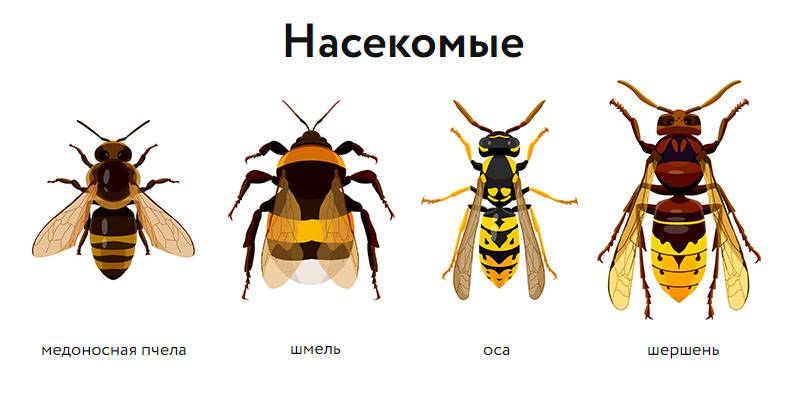
Bite symptoms
It can be difficult to immediately understand that the state of the cat has changed precisely because it was bitten by a wasp. But sometimes owners see a pet playing with an insect, or find it in the house.
Most of the bites of a cat by a wasp or a bee occur on the muzzle and limbs, sometimes, when an insect enters the mouth, in the area of the tongue and throat.
Conventionally, the symptoms after a bite can be divided into several reactions:
The first and most common is a local reaction, which consists of swelling, redness and severe pain at the site of the bite. Small local reactions pass within a day.
The second type of reaction is a more pronounced local reaction with elements of an allergy. It can lead to significant diffuse edema. For example, if a cat bite by a bee hits the head, the entire muzzle and auricles swell. Such a reaction is dangerous in that it can cause a decrease in airway patency due to severe swelling of the tissues of the muzzle or neck.
The third more serious reaction is a systemic allergic reaction, anaphylactic with urticaria, angioedema (angioneurotic edema), nausea, vomiting, diarrhea, pressure drop, salivation and shortness of breath. It occurs within minutes of being bitten. The shorter the interval between the bite and symptoms, the more severe the anaphylactic reaction will be.
The fourth reaction is a delayed reaction of hypersensitivity of the immune system to the components of the poison. Symptoms may appear within 3-14 days after the cat has been stung by a bee or wasp or other insect, and will consist of skin rash, vasculitis (inflammation of the blood vessels), kidney and joint damage, DIC (severe bleeding disorder, manifested by bleeding and blood clots).
The fifth reaction is toxic. Appears in case of massive poisoning (multiple bites). The cat develops fever, depression, pallor of the mucous membranes, neurological symptoms are likely: facial paralysis, ataxia (unsteadiness of gait), convulsions. Dark brown or red urine, bloody stools, and dark brown or bloody vomit may also occur.
Fortunately, in the vast majority of cases, with a single cat sting by a wasp or other stinging insect, the symptoms will be presented only by a local reaction.
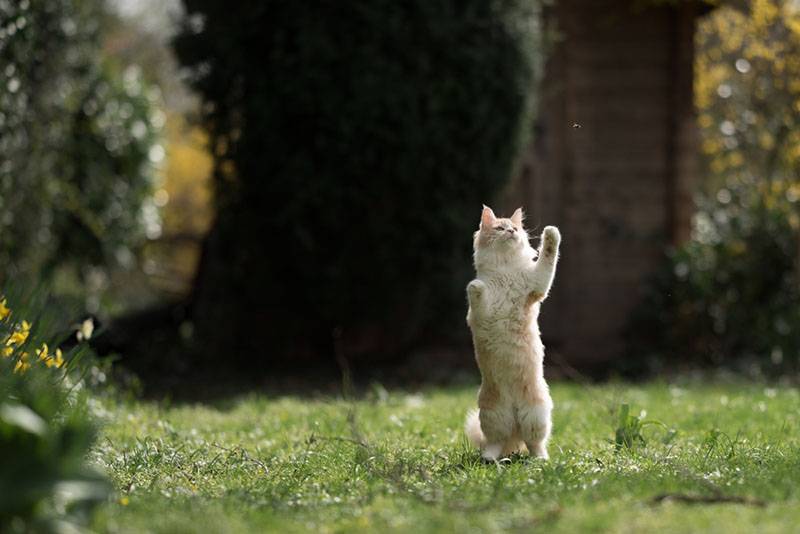
If a cat is bitten by a bee or wasp – first aid
Regardless of which insect has stung a cat, first aid measures will be about the same. The only difference is that only bees leave a sting in the wound. What to do if a cat is bitten by a bee or wasp?
Examine the animalto understand whether the bite was single or multiple, and in what place it fell.
Take out the sting. If the cat was stung by a bee, and the sting remains in the skin, then it must be carefully removed. The easiest way is to scrape parallel to the surface of the skin with any plastic card. This will allow you to remove the sting without squeezing it, because when squeezing, poison can additionally enter the wound.
Process. The bite site can be treated with a disinfectant: for example, an aqueous 0,05% solution of chlorhexidine.
Apply ice to the bite site. You can wrap ice cubes in a tissue paper or use any compact frozen product. The cold will reduce pain and inflammation.
With significant inflammation and severe edema, you can use:
Diphenhydramine (Dimedrol, Allervet 1%) at a dose of 1-2 mg (0,1-0,2 ml) per kg of body weight intramuscularly 2-3 times a day.
Prednisolone (Prednisolone, Prednivet) at a dose of 0,5-1 mg per kg per day. The dose is gradually reduced within 5-7 days.
Watch the animals. The first 20-30 minutes after the bite are especially important. During this time (for your own peace of mind) you can find the contacts and address of the nearest veterinary clinic.
Contact the clinic immediately if:
A wasp (it could also be another insect) stung the cat in the throat / mouth area;
The bites were multiple;
The cat has signs of Quincke’s edema: swelling of the muzzle, auricles, neck, chest, wheezing, wheezing, open mouth;
The cat has signs of a systemic allergic reaction (salivation, shortness of breath, vomiting, severe depression, etc.).
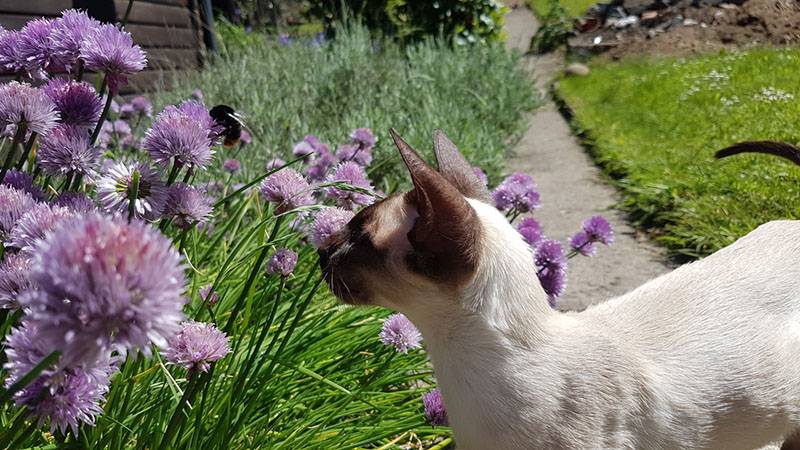
Complications from bites
Complications from insect bites are rare. However, you need to be aware of them in order to take the right action in a timely manner. In this section, we will not consider anaphylactic and other systemic reactions to insect bites, since they are described above in the symptoms.
Abscess
In rare cases, it can develop at the site of the bite. When bacteria enter the wound, purulent inflammation of the soft tissues begins. An abscess is also possible if a fragment of the sting remains deep in the skin. The process develops over several days. The bite site swells again, pain and redness appear. With large abscesses, systemic signs may appear: fever, loss of appetite, lethargy.
The abscess erupts on its own, or is opened in the clinic by a veterinarian. After the primary surgical treatment of the abscess cavity, the animal is prescribed broad-spectrum antibiotics (for example, Sinulox) and, in case of significant damage, painkillers (Petkam, Onsior, etc.).
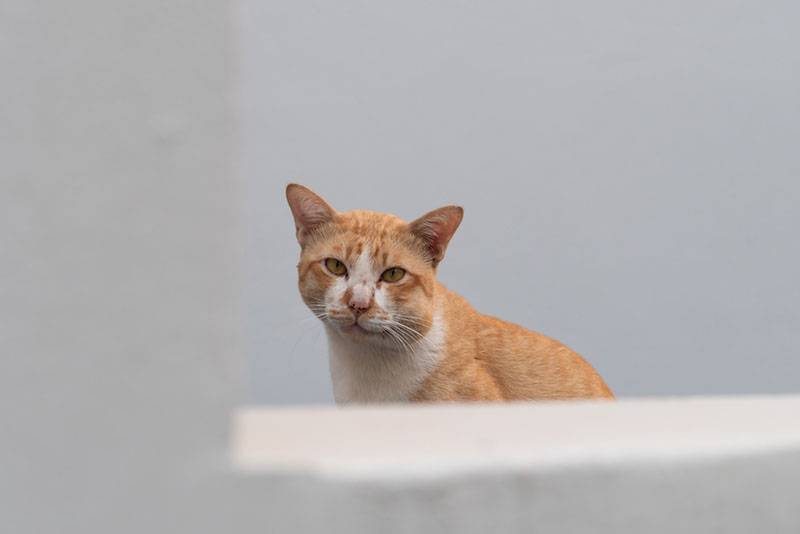
Hematoma
The bite site after a decrease in pain symptoms is often accompanied by itching, and then the animal actively scratches and rubs it. Also, the components of the poison can contribute to additional damage to small vessels at the site of the bite. In such cases, a hematoma may form – a limited local accumulation of blood under the skin from damaged vessels.
Small hematomas sometimes go away on their own. With a significant lesion, the veterinarian removes the contents from the hematoma cavity with a syringe. Next, steroidal anti-inflammatory drugs (Prednisolone, Dexamethasone) are used, which are either injected into the hematoma cavity after the contents are removed, or are administered orally for several days.

What is forbidden to do with bites?
Treat the bite site with alcohol solutions of iodine and brilliant green, solutions of vinegar or soda. A cat’s skin is thinner and drier than a human’s, and products like these will dry out the skin and can damage it.
Burn the bite. This will not affect the insect venom in any way, but will only cause a burn of the skin and soft tissues.
Trying to squeeze out poison or a sting from a wound is painful, it makes no sense and additionally injures the tissues, aggravating inflammation.
Treat the bite site with ichthyol or tar ointment, as well as other similar ointments. They can irritate the cat’s skin, because they contain components that are not suitable for it, and are also likely to be licked off by it, which will lead to intoxication.
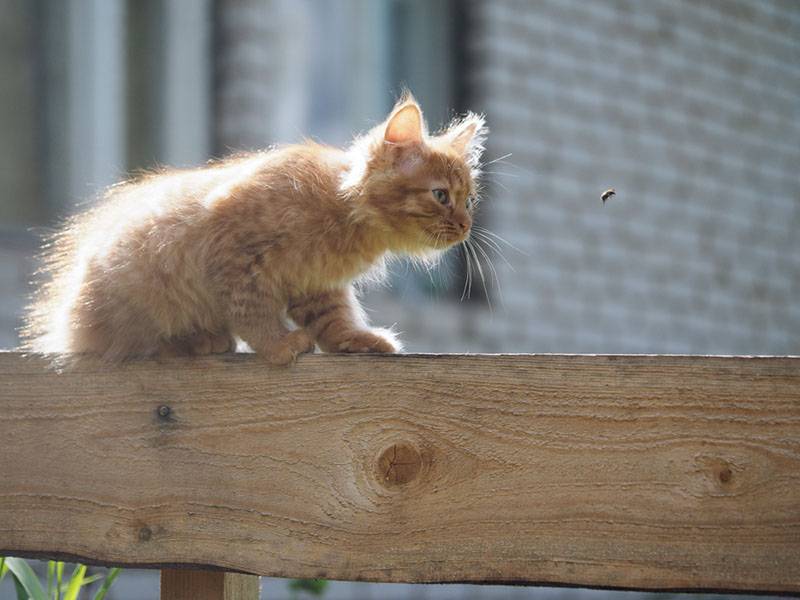
How to prevent a bite?
It is necessary to prevent the free access of the cat to the street.
On controlled walks, avoid contact of the animal with stinging insects.
Put mosquito nets on all windows in the house.
Examine bouquets, as well as fruits / berries purchased in the warm season on the street.
Check indoor flowers that stand on loggias, balconies and are brought from the street into the room during the cold season.
In private houses, inspect terraces, corridors, closets, attics, etc. for wasp nests.
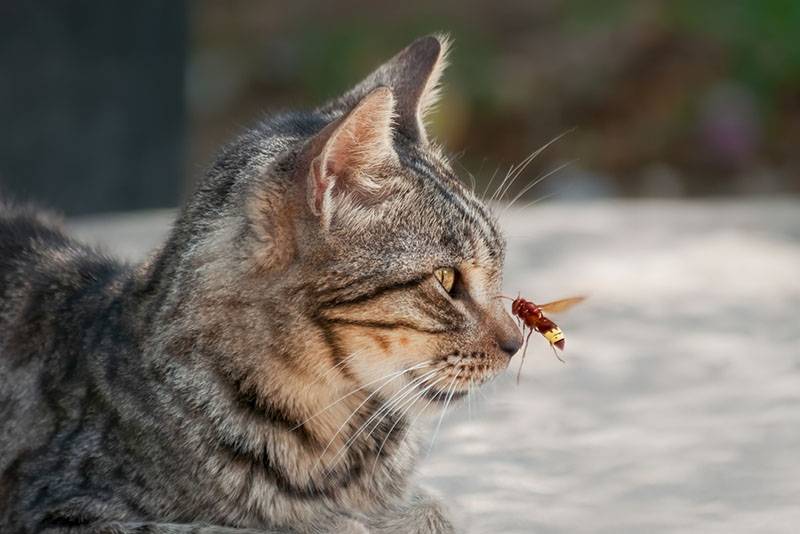
Summary
If a cat is bitten by a wasp or a bee, in most cases no special treatment is required. You need to make sure that there is no sting left in the wound (with a bee sting).
You can reduce pain with a cold compress and treat the bite wound with a 0,05% chlorhexidine solution.
In rare cases, a bite can lead to an allergic reaction, including anaphylaxis. This condition requires immediate medical attention.
Sometimes a systemic inflammatory reaction associated with the immune response to the poison can develop a few days after the bite. It can present with fever, damage to the kidneys, joints, vomiting, and diarrhea with blood, dark brown, or bloody urine.
The most dangerous for the animal are bites in the tissue of the oral cavity and in the pharynx, as well as multiple bites.
In some cases, local complications may develop: abscess or hematoma.
Answers to frequently asked questions
Sources:
Gary D. Norsworthy “The feline patient” (fifth edition), 2018
Chandler E.A., Gaskell R.M., Gaskell K.J. Cat Diseases, 2011
McIntyre D.K., Drobats K., Haskings S., Saxon W. “Emergency and small animal intensive care”, 2013





